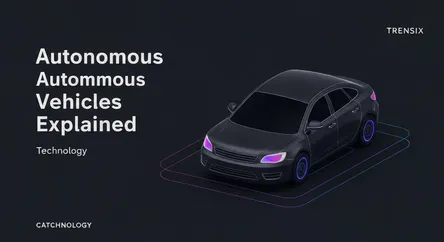Technology
Autonomous Vehicles Explained

Discover how autonomous vehicles use AI to drive themselves. Learn about the tech, its rising popularity, and its impact on society and travel.
What is it?
Autonomous vehicles, or self-driving cars, are vehicles that use sensors, cameras, and AI to navigate without human input. They perceive their surroundings using technologies like LiDAR and radar to make real-time driving decisions. The industry uses a scale from Level 0 (no automation) to Level 5 (full automation), where a vehicle can operate under any conditions without a human driver. Most current systems are at Level 2 or 3, providing advanced driver assistance but still requiring human oversight.
Why is it trending?
The trend is fueled by breakthroughs in AI and massive investments from tech companies and automakers. The primary goal is to enhance safety, as autonomous systems can potentially eliminate accidents caused by human error. High-profile pilot programs and the promise of increased efficiency, reduced traffic congestion, and new mobility services have captured public and commercial interest. As sensor and computing technology becomes cheaper and more powerful, the feasibility of widespread adoption grows closer.
How does it affect people?
The impact will be transformative. It promises to increase road safety and provide mobility to those unable to drive, like the elderly or disabled. Commutes could become productive time. However, it also poses challenges, including significant job displacement for professional drivers in industries like trucking and taxis. Society must also grapple with complex ethical questions, such as how a car should be programmed to react in an unavoidable accident, and establish new legal frameworks for liability and cybersecurity.